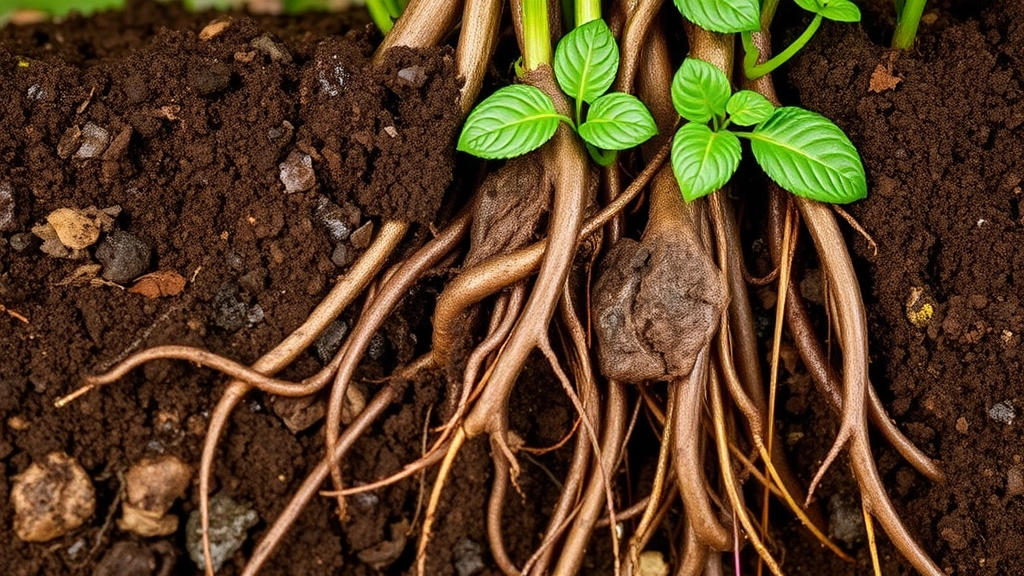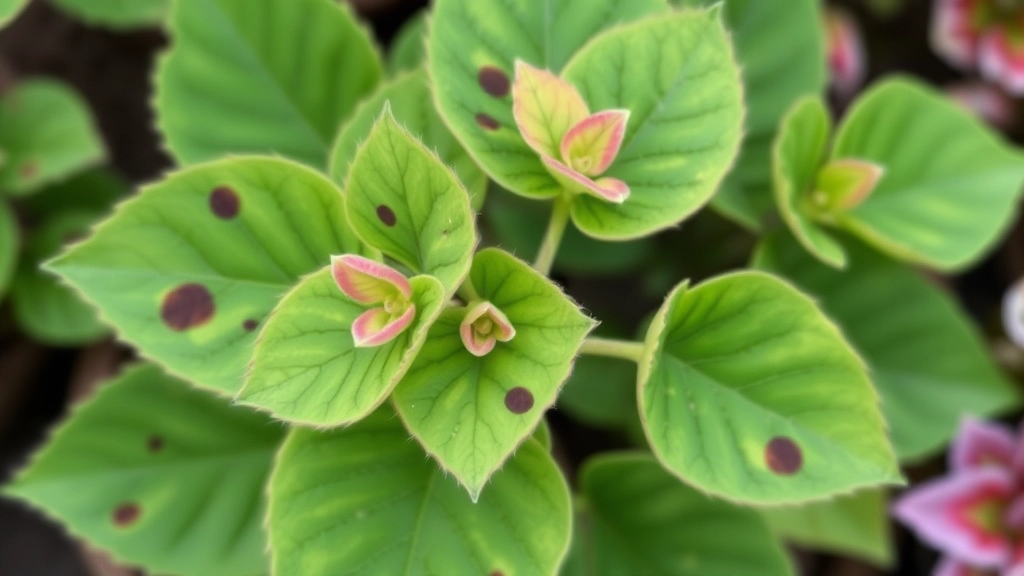Kalanchoe Leaf Issues
Have you noticed brown spots on your Kalanchoe leaves? You’re not alone. These unsightly blemishes can be a sign of various issues, from overwatering and root rot to fungal infections and pest infestations. Understanding the causes and knowing how to treat them is crucial to restoring your plant’s health.
Common Causes of Brown Spots
Let’s dive into the common reasons behind these brown spots and explore effective solutions to get your Kalanchoe thriving again. Whether it’s adjusting your watering habits, addressing nutrient deficiencies, or tackling pests, we’ve got you covered.
Causes of Brown Spots on Kalanchoe Leaves
Have you noticed unsightly brown spots appearing on your Kalanchoe leaves? You’re not alone. Many plant enthusiasts face this issue, and understanding the causes is vital for restoring your plant’s health.
Brown spots can result from several factors, including:
- Overwatering: This is a leading cause of brown spots. When the roots sit in waterlogged soil, they can rot, leading to symptoms that manifest on the leaves.
- Fungal Infections: Certain fungi thrive in damp conditions, causing brown lesions on the leaves.
- Sunburn: Kalanchoes prefer bright, indirect light. Too much direct sunlight can scorch the leaves, resulting in brown patches.
- Pests: Insects like spider mites and mealybugs can cause leaf damage, leading to brown spots.
- Nutrient Deficiencies: Lack of essential nutrients can weaken the plant, making it susceptible to various ailments.
Understanding these causes not only helps in identifying the problem but also aids in implementing effective solutions. For more detailed care instructions, you might find our guide on fixing drooping Kalanchoe leaves helpful. Additionally, if you’re dealing with pest issues, check out our tips on Kalanchoe care and pest management.
Impact of Overwatering and Root Rot

Have you ever looked at your Kalanchoe and wondered why those lovely leaves are turning brown?
One of the sneakiest culprits behind this issue is overwatering, which can lead to root rot.
What Happens with Overwatering?
When you water your Kalanchoe too much, the soil becomes soggy.
This creates a perfect environment for root rot to set in.
The roots start to decay, and your plant struggles to take up water and nutrients.
Signs of Overwatering and Root Rot
Here are some telltale signs that your Kalanchoe might be drowning:
- Brown spots on the leaves
- Leaves that feel mushy or soft
- A foul smell coming from the soil
- Yellowing leaves that eventually drop off
How to Prevent Overwatering
To keep your Kalanchoe happy and healthy, consider these tips:
- Check the soil: Always feel the top inch of soil before watering. If it’s still moist, hold off.
- Use well-draining soil: A mix designed for succulents works wonders.
- Choose the right pot: Ensure your pot has drainage holes to let excess water escape.
What to Do If You Suspect Root Rot
If you think your Kalanchoe is suffering from root rot, don’t panic! Here’s what to do:
- Remove the plant from its pot and inspect the roots.
- Cut away any mushy or black roots using clean scissors.
- Let the roots dry out for a few hours before repotting in fresh, dry soil.
Identifying and Preventing Fungal Infections
Are you noticing brown spots on your Kalanchoe leaves and worried that a fungal infection might be the culprit?
Fungal infections can be a common issue for Kalanchoe plants, often manifesting as discolouration and spots on the leaves.
Recognising the Signs
Identifying a fungal infection early can save your plant from significant damage. Here are some key indicators:
- Brown or black spots: These may appear water-soaked initially before turning darker.
- Powdery mildew: A white, powdery substance may form on the leaves.
- Wilting leaves: If the leaves are wilting despite adequate watering, it could indicate root issues related to a fungal infection.
- Leaf drop: Sudden leaf drop can also signal a problem.
Preventative Measures
Preventing fungal infections is crucial for maintaining the health of your Kalanchoe. Here are some effective strategies:
- Proper watering: Avoid overwatering, as soggy soil creates an ideal environment for fungi. Water only when the top inch of soil feels dry.
- Good air circulation: Ensure your plant is not overcrowded. Space out your plants to allow for air movement.
- Cleanliness: Regularly remove dead leaves and debris from the pot to limit fungal spores.
- Use sterile soil: Always use fresh, sterile potting mix to reduce the risk of introducing pathogens. For more detailed soil tips, you can refer to the best soil for Kalanchoe Blossfeldiana.
Treatment Options
If you suspect a fungal infection, immediate action is necessary. Here are some treatment options:
- Fungicides: Apply a suitable fungicide according to the product instructions.
- Remove affected leaves: Prune away any infected leaves to prevent the spread. For more comprehensive care tips, check out this guide on fixing drooping Kalanchoe leaves.
The Role of Sunburn and Excessive Sunlight

Are your Kalanchoe leaves developing unsightly brown spots? It could be due to sunburn or excessive sunlight exposure. Understanding how light affects your plant is crucial for its health.
Kalanchoe plants thrive in bright, indirect sunlight. However, too much direct sunlight can lead to:
- Leaf Scorching: Leaves may turn brown and crispy at the edges.
- Fading Colours: The vibrant hues of your Kalanchoe can dull under harsh light.
- Wilting: Overexposure can cause the plant to lose moisture rapidly.
To prevent sunburn, consider these tips:
- Gradual Acclimation: If moving your plant outdoors, introduce it to sunlight gradually.
- Optimal Positioning: Place your Kalanchoe in a spot where it receives filtered light, like near a window with sheer curtains.
- Monitor Temperature: Ensure that the ambient temperature remains comfortable, as extreme heat can exacerbate the effects of sunlight.
I once had a Kalanchoe that thrived for months until I moved it to a sunnier spot without considering its needs. The leaves quickly developed brown spots, and I had to adjust its position to restore its health.
Common Pests That Cause Brown Spots
Have you noticed brown spots appearing on your Kalanchoe leaves? This can be a frustrating issue, especially when you’re trying to maintain a healthy plant. One potential culprit could be pests.
Identifying Common Pests
Several pests can wreak havoc on your Kalanchoe, leading to unsightly brown spots. Here are the most common offenders:
- Mealybugs: These tiny, white, cotton-like pests often hide in leaf joints and can cause yellowing and brown spots as they suck the sap from the leaves.
- Spider Mites: These minuscule arachnids thrive in dry conditions and can create stippling and brown spots on leaves, along with webbing on the undersides.
- Aphids: Small and green or black, aphids can cluster on new growth and cause leaf curling and brown spots.
- Scale Insects: These pests appear as small, brownish bumps on the leaves and stems, draining the plant’s nutrients and causing brown patches.
Signs of Infestation
To effectively combat these pests, it’s crucial to know the signs of infestation:
- Visible Pests: Spotting the pests themselves is the most direct way to identify an issue.
- Sticky Residue: A sticky substance, known as honeydew, can indicate aphids or mealybugs.
- Webbing: If you see fine webs, especially on the undersides of leaves, spider mites are likely present.
Prevention and Treatment
Preventing pests is always better than dealing with an infestation. Here are some effective strategies:
- Regular Inspections: Check your plants frequently for signs of pests.
- Proper Airflow: Ensure your Kalanchoe is not overcrowded to promote good airflow, which helps deter pests.
- Neem Oil: A natural pesticide, neem oil can be sprayed on affected plants to kill pests without harming the plant. For more detailed guidance, refer to our Kalanchoe Beharensis care guide.
- Insecticidal Soap: This can effectively kill soft-bodied insects like aphids and mealybugs. For additional tips on keeping your Kalanchoe healthy, check out our guide on preventing leaf drying.
Addressing Nutrient Deficiencies and Soil Health

Have you ever noticed your Kalanchoe looking a bit under the weather? Brown spots can often signal more than just a watering issue; they might hint at nutrient deficiencies or soil health problems.
Understanding Nutrient Needs
Kalanchoes thrive on a balanced diet of nutrients. Here’s what you need to know:
- Nitrogen: Essential for leaf growth. A deficiency can lead to yellowing leaves and brown spots.
- Phosphorus: Important for root development. Low levels can cause stunted growth and poor flowering.
- Potassium: Helps in overall plant health. A lack of potassium may result in browning leaf edges.
Soil Matters
The right soil is crucial for your plant’s health. Here’s how to ensure your soil is up to scratch:
- Well-draining Soil: Kalanchoes prefer a mix that allows excess water to escape. Consider using a cactus or succulent mix.
- pH Level: Aim for a slightly acidic to neutral pH (around 6.0 to 7.0). You can test your soil with a simple pH kit.
- Organic Matter: Adding compost can boost nutrient content and improve soil structure.
Signs of Nutrient Deficiencies
Keep an eye out for these signs:
- Leaf Discoloration: Yellowing or browning can indicate a lack of nutrients.
- Stunted Growth: If your Kalanchoe isn’t growing as expected, it might be time to check the soil.
- Poor Flowering: If blooms are sparse, nutrients could be the issue.
How to Fix It
So, how do you address these deficiencies? Here are some quick tips:
- Fertilise Regularly: Use a balanced, water-soluble fertiliser during the growing season (spring and summer).
- Repot if Necessary: If the soil looks compacted or depleted, consider repotting with fresh soil.
- Monitor Watering: Overwatering can wash away nutrients. Ensure your watering routine is spot-on.
Effective Treatment Methods to Restore Plant Health
When you notice brown spots on your Kalanchoe leaves, it’s crucial to act quickly to restore your plant’s health. You might be wondering, what are the best ways to treat these issues effectively?
FAQs on Brown Spots on Kalanchoe Leaves
What causes brown spots on Kalanchoe leaves?
Brown spots on Kalanchoe leaves can be caused by overwatering, which leads to root rot, sunburn from excessive sunlight, or nutrient deficiencies in the soil.
How does overwatering affect Kalanchoe leaves?
Overwatering makes the soil soggy, creating an ideal environment for root rot. This causes the roots to decay, preventing the plant from absorbing water and nutrients, leading to brown spots on the leaves.
What are the signs of overwatering and root rot in Kalanchoe?
- Brown spots on the leaves
- Leaves that feel mushy or soft
- A foul smell coming from the soil
- Yellowing leaves that eventually drop off
How can I prevent overwatering my Kalanchoe?
- Check the soil: Always feel the top inch of soil before watering. If it’s still moist, hold off.
- Use well-draining soil: A mix designed for succulents works wonders.
- Choose the right pot: Ensure your pot has drainage holes to let excess water escape.
What should I do if I suspect my Kalanchoe has root rot?
- Remove the plant from its pot and inspect the roots.
- Cut away any mushy or black roots using clean scissors.
- Let the roots dry out for a few hours before repotting in fresh, dry soil.
Can excessive sunlight cause brown spots on Kalanchoe leaves?
Yes, too much direct sunlight can lead to sunburn, causing the leaves to develop brown and crispy edges, fade in color, and wilt due to rapid moisture loss.
How can I prevent sunburn on my Kalanchoe?
- Gradual Acclimation: If moving your plant outdoors, introduce it to sunlight gradually.
- Optimal Positioning: Place your Kalanchoe in a spot where it receives filtered light, like near a window with sheer curtains.
- Monitor Temperature: Ensure that the ambient temperature remains comfortable, as extreme heat can exacerbate the effects of sunlight.
What nutrient deficiencies can cause brown spots on Kalanchoe leaves?
- Nitrogen: Essential for leaf growth. A deficiency can lead to yellowing leaves and brown spots.
- Phosphorus: Important for root development. Low levels can cause stunted growth and poor flowering.
- Potassium: Helps in overall plant health. A lack of potassium may result in browning leaf edges.
How can I ensure my Kalanchoe gets the right nutrients?
- Well-draining Soil: Kalanchoes prefer a mix that allows excess water to escape. Consider using a cactus or succulent mix.
- pH Level: Aim for a slightly acidic to neutral pH (around 6.0 to 7.0). You can test your soil with a simple pH kit.
- Organic Matter: Adding compost can boost nutrient content and improve soil structure.
What are the signs of nutrient deficiencies in Kalanchoe?
- Leaf Discoloration: Yellowing or browning can indicate a lack of nutrients.
- Stunted Growth: If your Kalanchoe isn’t growing as expected, it might be time to check the soil.
- Poor Flowering: If blooms are sparse, nutrients could be the issue.
How can I fix nutrient deficiencies in my Kalanchoe?
- Fertilise Regularly: Use a balanced, water-soluble fertiliser during the growing season (spring and summer).
- Repot if Necessary: If the soil looks compacted or depleted, consider repotting with fresh soil.
- Monitor Watering: Overwatering can wash away nutrients. Ensure your watering routine is spot-on.
References
-
Kalanchoe Plant Care: How To Grow A Kalanchoe
-
How to Grow and Care for Kalanchoe
-
Kalanchoe: How to Grow and Care for Kalanchoe Plants
